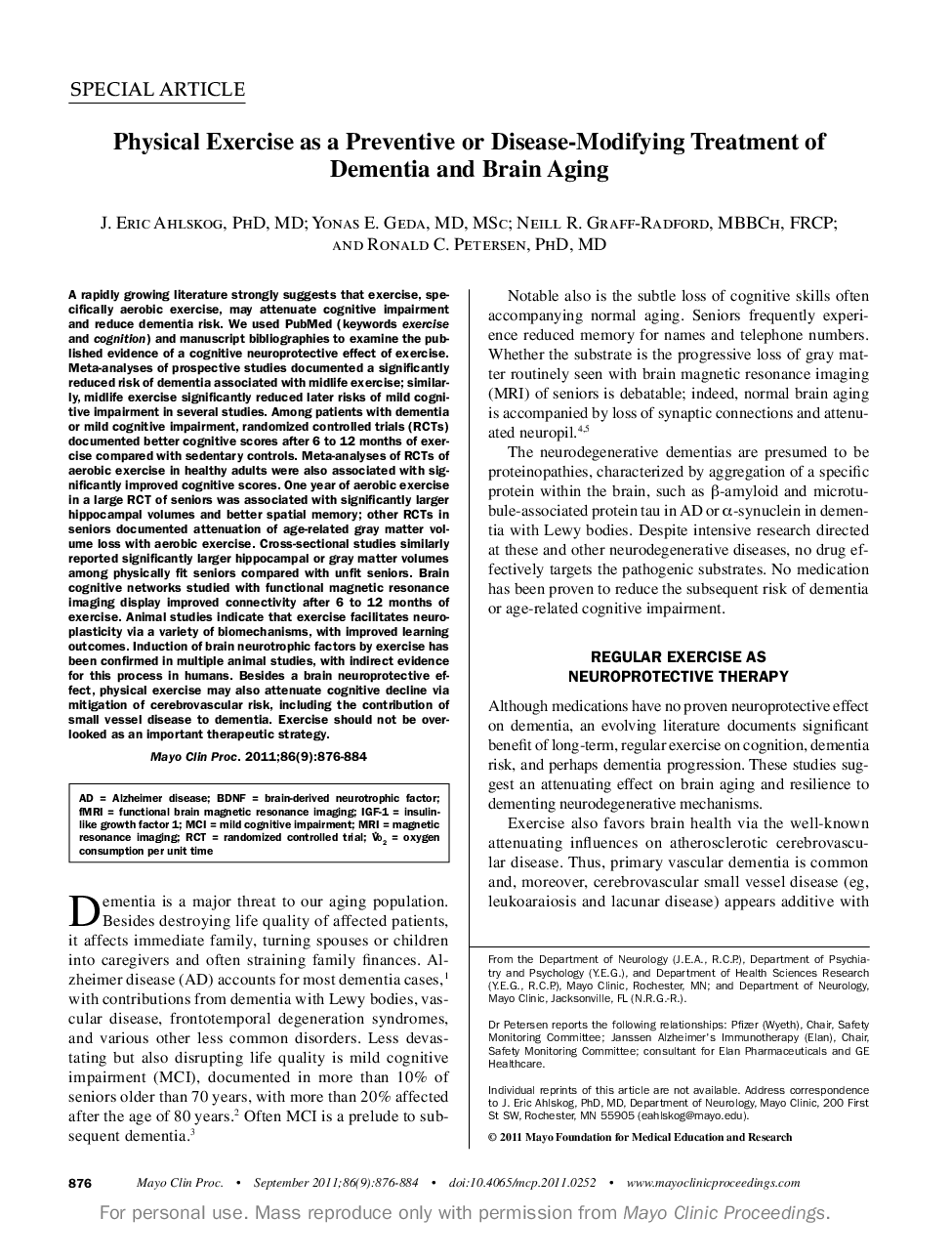| کد مقاله | کد نشریه | سال انتشار | مقاله انگلیسی | نسخه تمام متن |
|---|---|---|---|---|
| 2999824 | 1180305 | 2011 | 9 صفحه PDF | دانلود رایگان |
عنوان انگلیسی مقاله ISI
Physical Exercise as a Preventive or Disease-Modifying Treatment of Dementia and Brain Aging
دانلود مقاله + سفارش ترجمه
دانلود مقاله ISI انگلیسی
رایگان برای ایرانیان
کلمات کلیدی
VO2IGF-1RCTinsulinlike growth factor 1BDNF - BDNF یا فاکتور نورونزایی مشتقشده از مغز Randomized controlled trial - آزمایش تصادفی کنترل شدهmild cognitive impairment - اختلال شناختی خفیفMRI - امآرآی یا تصویرسازی تشدید مغناطیسیAlzheimer disease - بیماری آلزایمرMagnetic resonance imaging - تصویربرداری رزونانس مغناطیسیfMRI - تصویرسازی تشدید مغناطیسی کارکردیBrain-derived neurotrophic factor - فاکتور نوروتروفی مشتق شده از مغزoxygen consumption per unit time - مصرف اکسیژن در واحد زمانMCI - همراه اول
موضوعات مرتبط
علوم پزشکی و سلامت
پزشکی و دندانپزشکی
کاردیولوژی و پزشکی قلب و عروق
پیش نمایش صفحه اول مقاله

چکیده انگلیسی
A rapidly growing literature strongly suggests that exercise, specifically aerobic exercise, may attenuate cognitive impairment and reduce dementia risk. We used PubMed (keywords exercise and cognition) and manuscript bibliographies to examine the published evidence of a cognitive neuroprotective effect of exercise. Meta-analyses of prospective studies documented a significantly reduced risk of dementia associated with midlife exercise; similarly, midlife exercise significantly reduced later risks of mild cognitive impairment in several studies. Among patients with dementia or mild cognitive impairment, randomized controlled trials (RCTs) documented better cognitive scores after 6 to 12 months of exercise compared with sedentary controls. Meta-analyses of RCTs of aerobic exercise in healthy adults were also associated with significantly improved cognitive scores. One year of aerobic exercise in a large RCT of seniors was associated with significantly larger hippocampal volumes and better spatial memory; other RCTs in seniors documented attenuation of age-related gray matter volume loss with aerobic exercise. Cross-sectional studies similarly reported significantly larger hippocampal or gray matter volumes among physically fit seniors compared with unfit seniors. Brain cognitive networks studied with functional magnetic resonance imaging display improved connectivity after 6 to 12 months of exercise. Animal studies indicate that exercise facilitates neuroplasticity via a variety of biomechanisms, with improved learning outcomes. Induction of brain neurotrophic factors by exercise has been confirmed in multiple animal studies, with indirect evidence for this process in humans. Besides a brain neuroprotective effect, physical exercise may also attenuate cognitive decline via mitigation of cerebrovascular risk, including the contribution of small vessel disease to dementia. Exercise should not be overlooked as an important therapeutic strategy.
ناشر
Database: Elsevier - ScienceDirect (ساینس دایرکت)
Journal: Mayo Clinic Proceedings - Volume 86, Issue 9, September 2011, Pages 876-884
Journal: Mayo Clinic Proceedings - Volume 86, Issue 9, September 2011, Pages 876-884
نویسندگان
J. Eric PhD, MD, Yonas E. MD, MSc, Neill R. MBBCh, FRCP, Ronald C. PhD, MD,